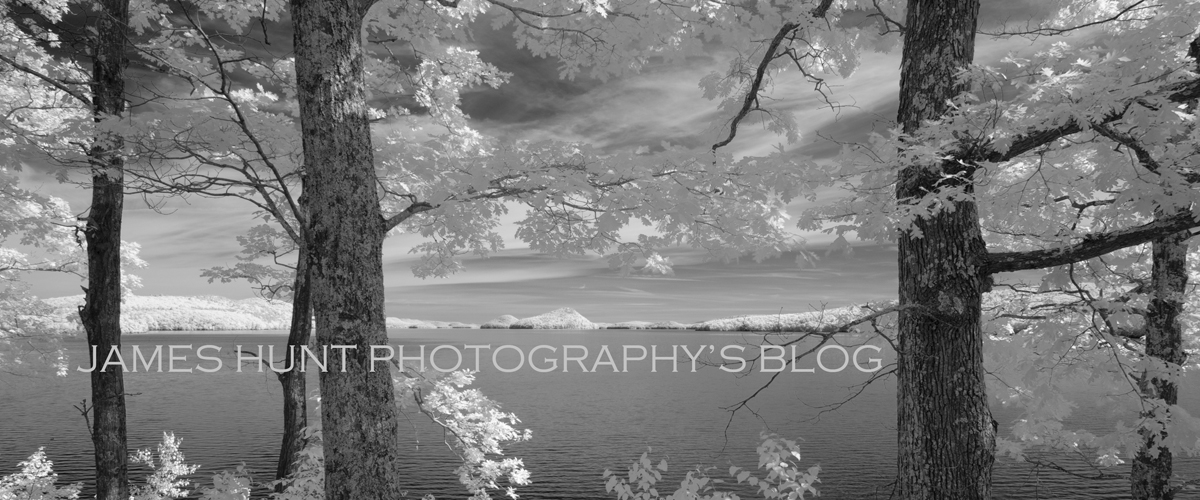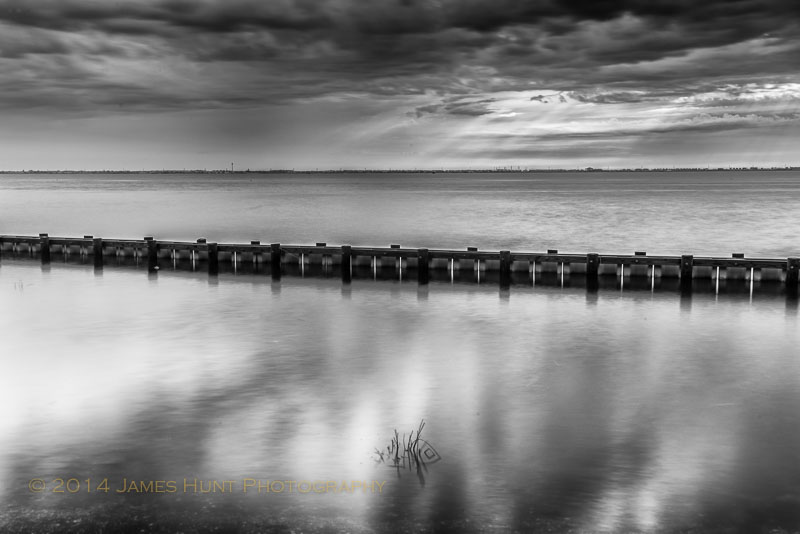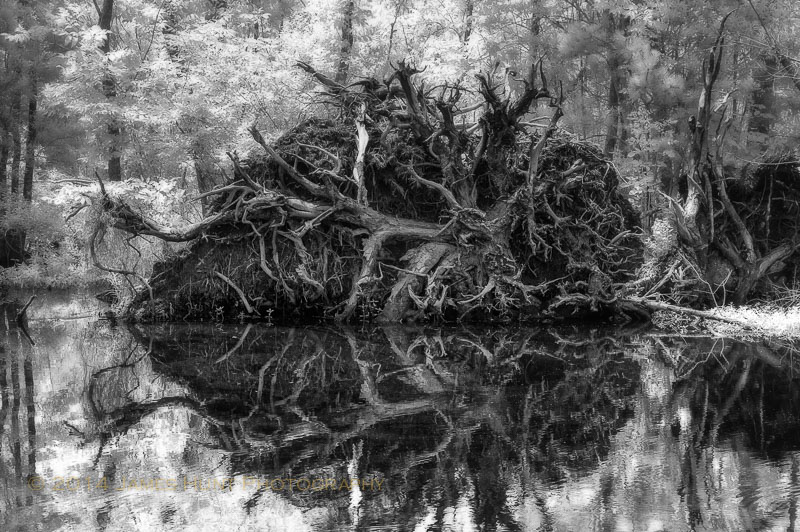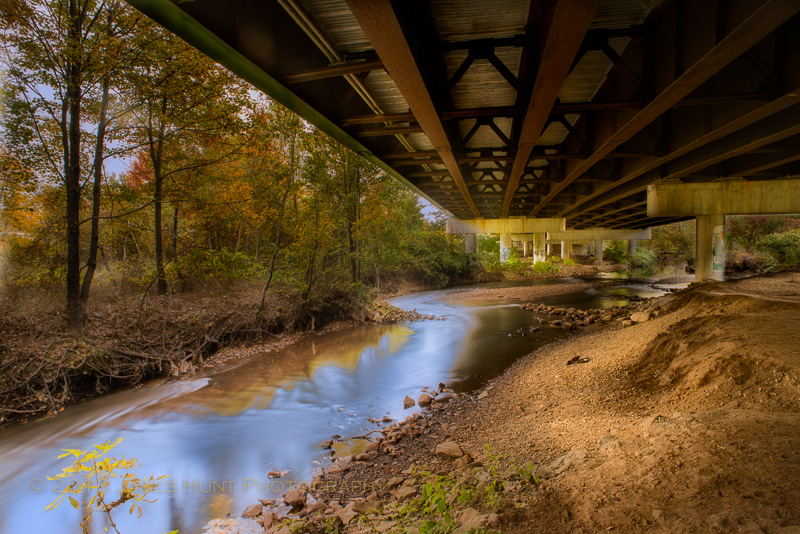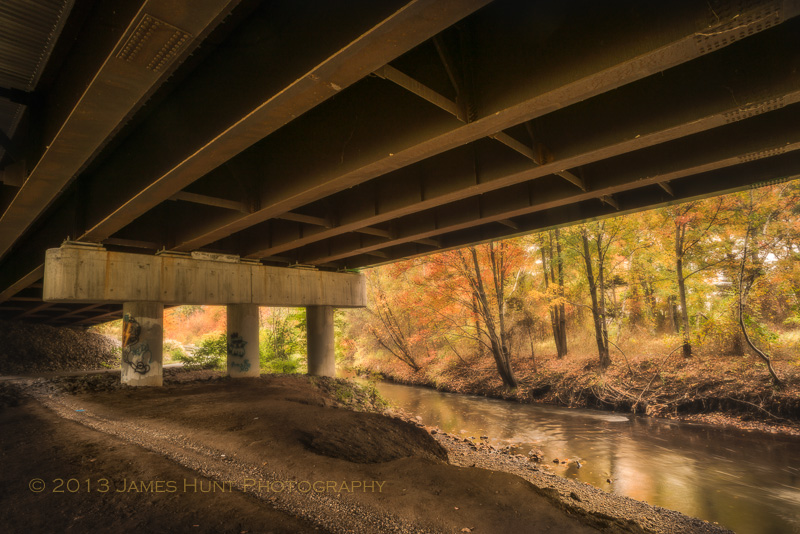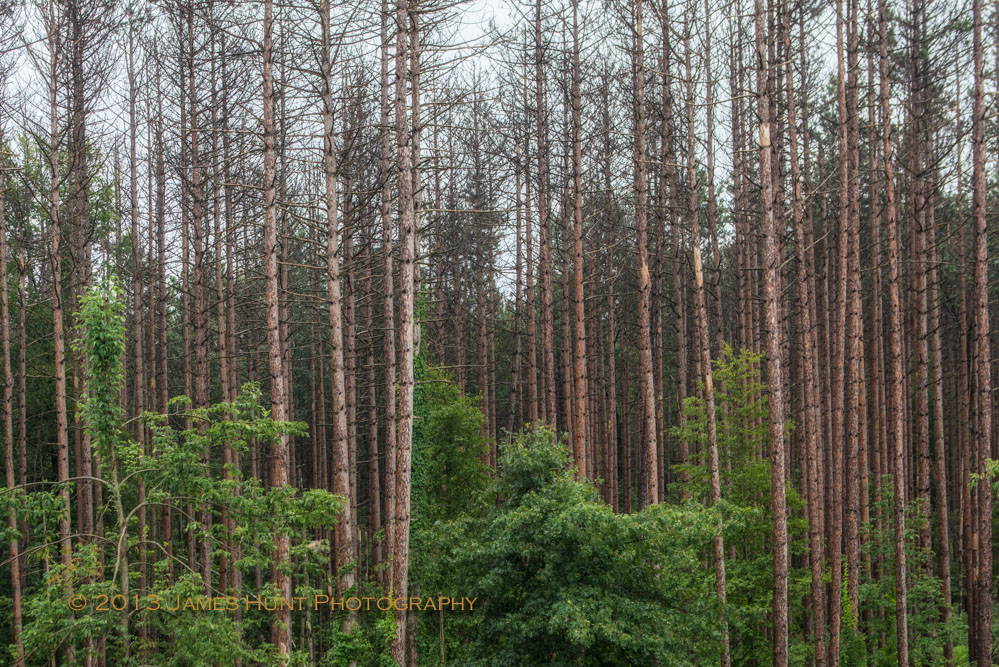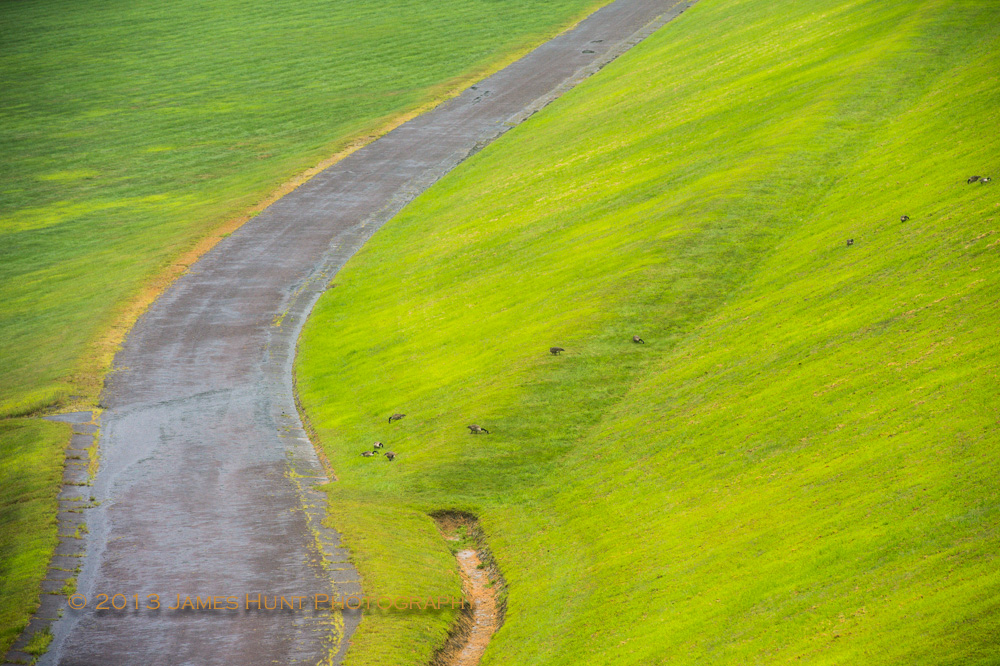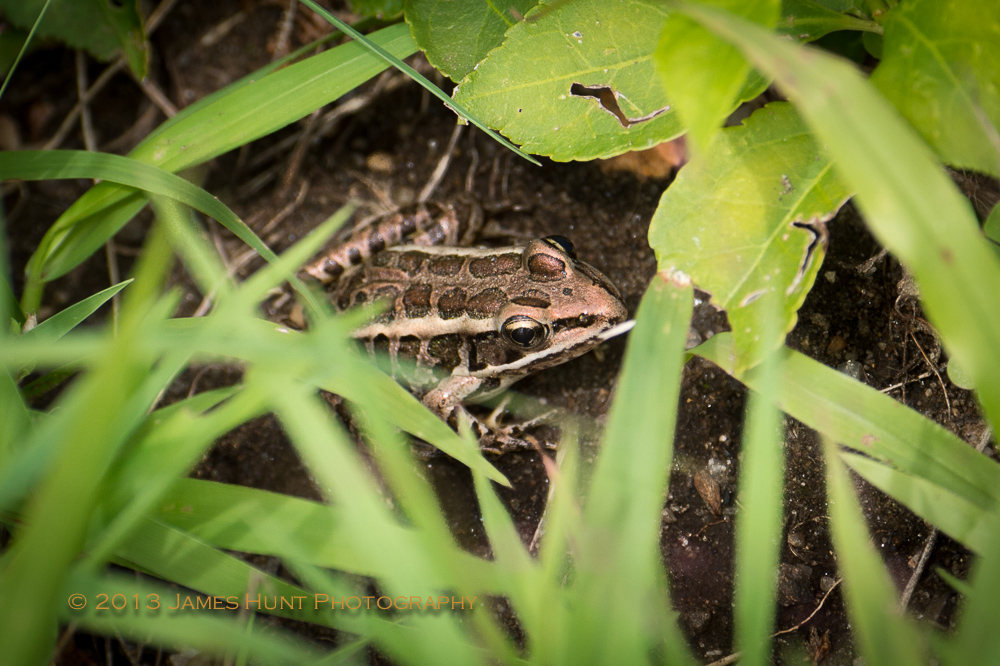I’ve written previously about the Isaac Newton apple trees on the campus of Babson College, where I work. They are a wonderful symbol of the intellectual curiosity and excitement of the founder, Roger Babson as well as his appreciation of the natural world. They were grown from cuttings from the original tree that helped Newton deduce the laws of gravity. Many trees have come from that line but my favorite, and the favorite of many on campus is this particular tree, which was planted in 1954.
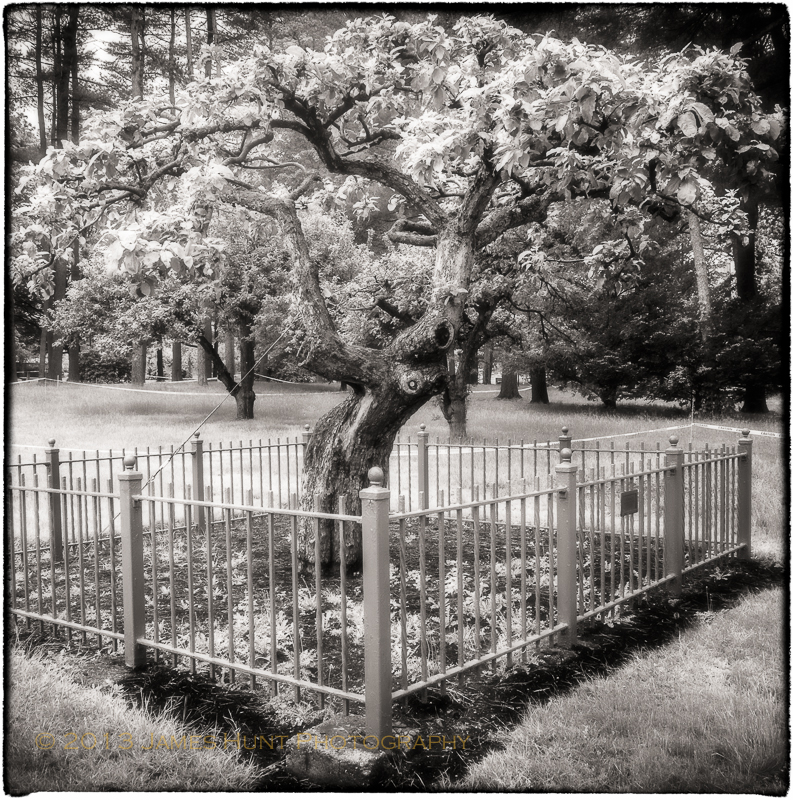
It is old as fruit trees go, quite old. It’s longevity is really the product of the hard work of the Facilities staff of the College. But caring ultimately can’t conquer time. Last Wednesday, was the time chosen for Sir Isaac’s and Roger’s tree to be taken down. The tree is still producing leaves, as you can see here. Examination by experts though over several years, made it clear that it was extraordinarily fragile. Building will be taking place nearby. It could not survive a move. So with reluctance, the decision was made that this was the time. The College did a very good job of communicating the issues to the community, thankfully. Ever since I came to Babson I have found the tree to be a place of contemplation, a place that was very helpful, even necessary at times. It turns out, I was not alone. Other came to say goodbye last Wednesday morning. It was difficult to watch, to experience, but I’m glad I was there. The day began like a bad trip to the doctor. Waiting.
Clearly I have a deep affection for nature and at times, anthropomorphize trees. Relationships are what we put into them. Watching arborists at work has always fascinated me. Like many professions whose work doesn’t make it to the TV or computer screen, we don’t realize just how complicated the job is. I’ve had the good fortune to photograph a number of arborists over the years, and have come to view them as part craftsman/woman, part scientist/engineer, part naturalist, part business person, etc. They have a lot going on. I was struck here by their exercise of craft. The removal of a tree in close quarters is difficult and can be dangerous. In addition, they were quite aware that this tree was special. I appreciated that. Preparation took the better part of half an hour.
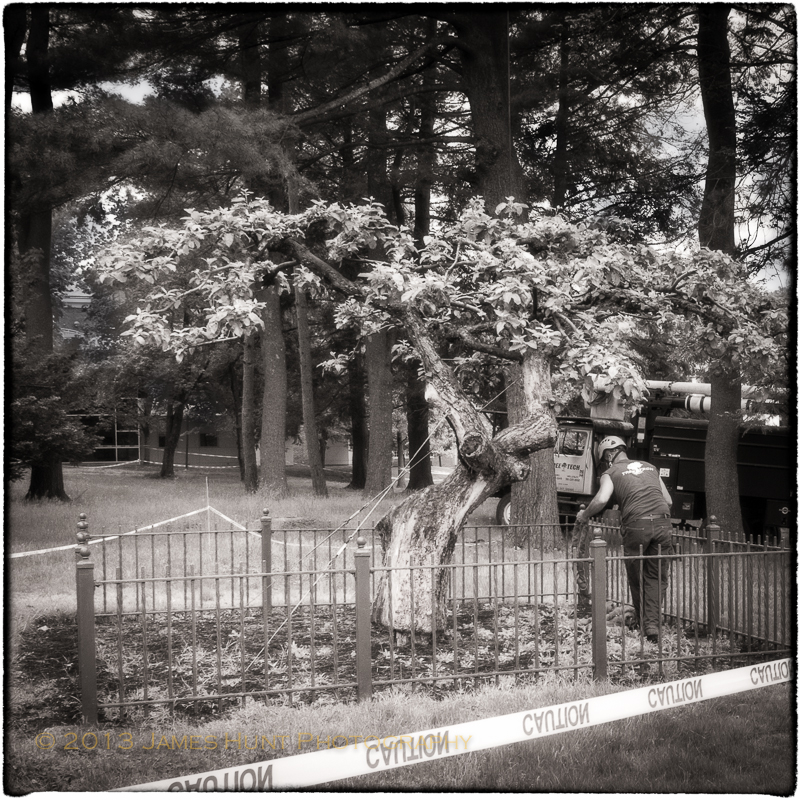
I was reminded then of the carpenters’ oath: measure twice, cut once. The tree was being held up at this point by a cable from a crane, tied carefully to the trunk and upper branches.
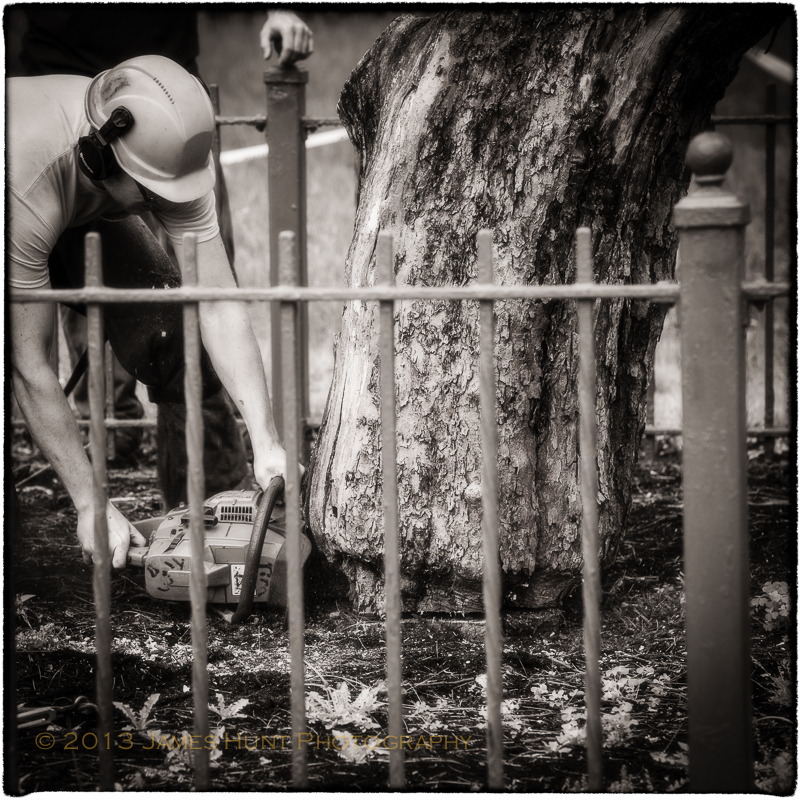
The cut took just a minute or two, after which Sir Isaac’s tree was released from the bonds of gravity.
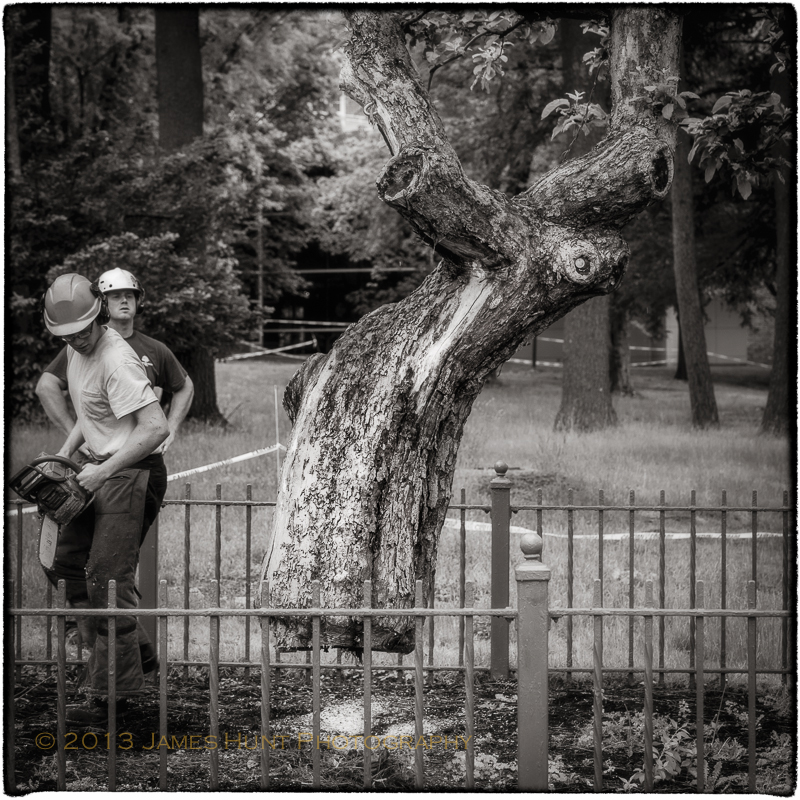
And moved toward the heavens.

The ascent also lasted only a few minutes.
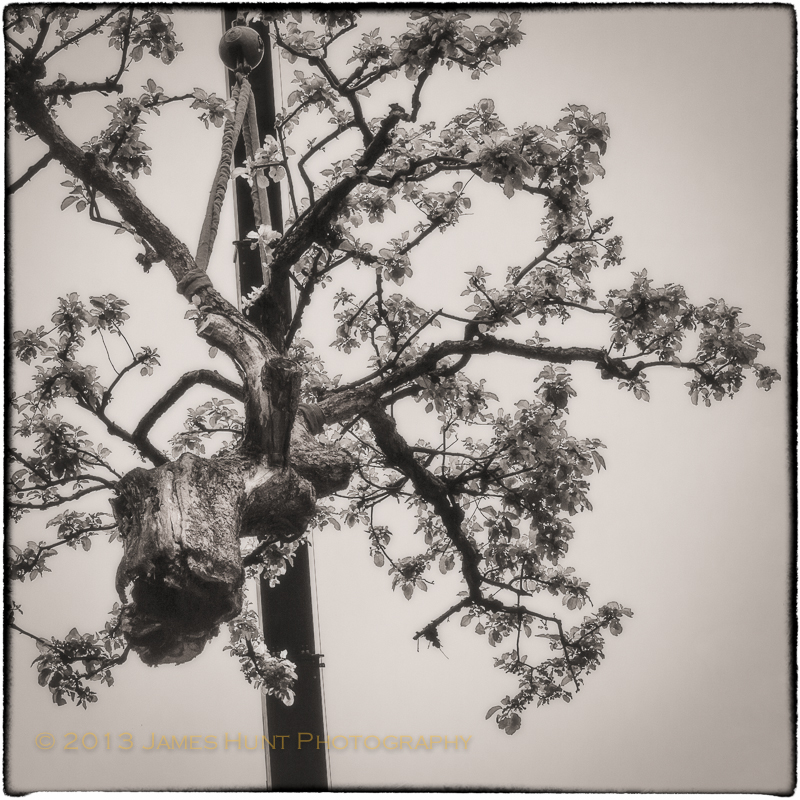
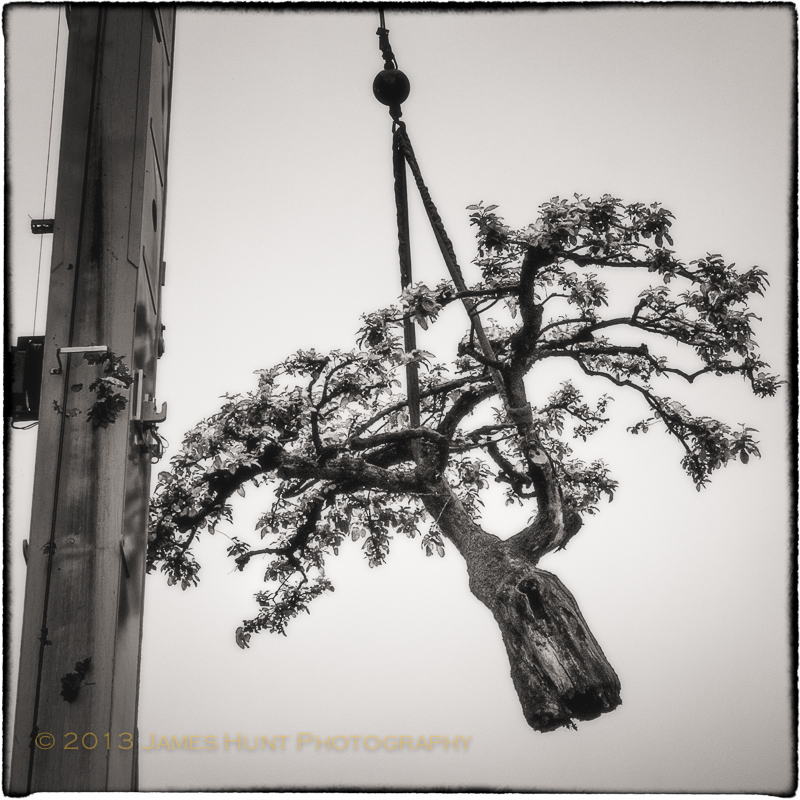
The tree was then laid on the ground and the arborists and staff from the College examined it, and could clearly see that indeed, it was literally a shell of its former self. Much of the wood, however, as well as the remaining cuttings will be saved for gifts and other symbols.
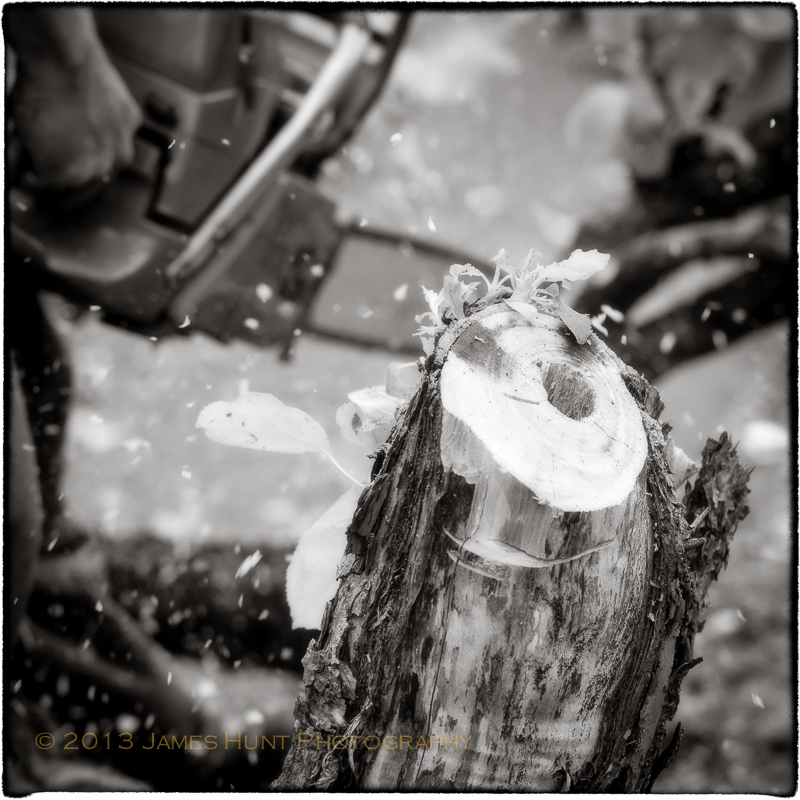
It is difficult to come to grips with just how powerless we are in the face of our mortality. We try not to think about it, but there are reminders.

I’m glad that I had a chance to get to know Sir Isaac’s tree, and to share it’s life with quite a few other admirers on the campus. It occurred to me that, hey, this is a college campus and I’ve been here quite a while. I’ve never seen any form of disrespect paid to the tree. Not so much as a piece of liter or toilet paper. From what I’m told, my perception is accurate. So now, we move ahead. Here is Babson’s new apple tree grove, and you can guess where the seedlings came from.
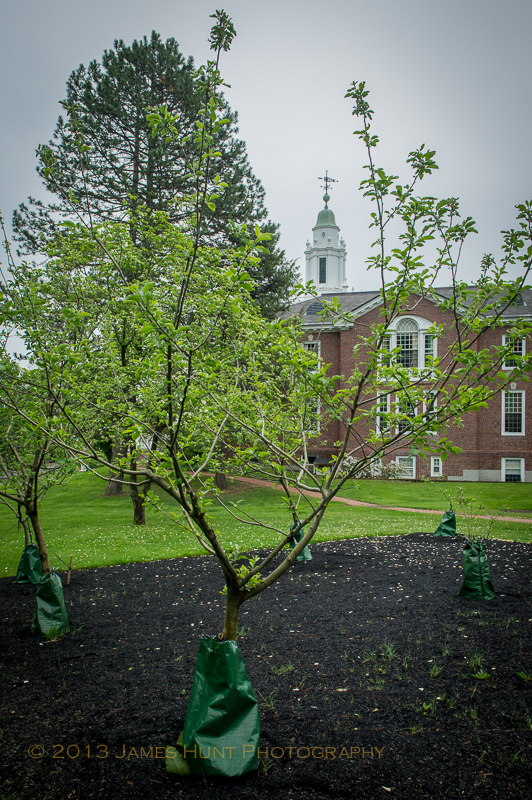
I want to thank Stephen Tolley who was in charge of the project for giving me access and background. I also want to thank Stephen and colleagues for the care they demonstrated. Best wishes to those in the USA and elsewhere who observe Memorial Day and pay their respects this weekend.
